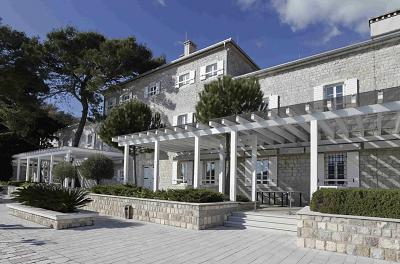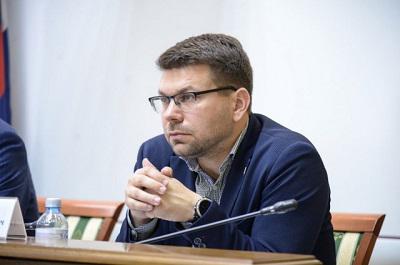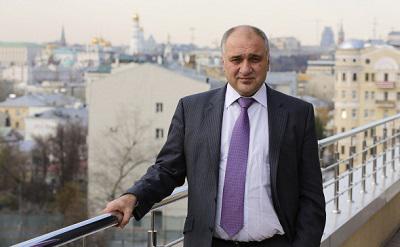Our story will appear strange – it seems more like old-fashioned detective stories about mysterious criminals than a real-life story of a person operating in a European capital in the twenty-first century. But that's the reality – very little is known about the criminal leader Arman Aharonyan, who has entrenched himself in Prague.
The results of his life had to be restored slowly and gradually. It's known that he is Armenian, operates in the Czech Republic, and possibly Slovakia, and had conflicts with another Armenian criminal, Andranik Soghoyan. But a clear picture of Akharoyan’s life cannot be reconstructed. This is paradoxical for a prominent figure doing business in the heart of Europe.
Even the surname is spelled differently by different sources – sometimes as Aharonyan and sometimes as Aharonyan. This may be because most researchers gather information about Arman Aharonyan from Czech sources, where he is usually referred to as Arman Aharonjan.
However, the name Akharonyan first came to light in the Czech Republic in connection with a conflict in the local criminal environment. However, it can be considered local only with a broad interpretation – all key representatives of the Armenian criminals were involved in the investigation of a murder in Prague in 2007.
In Vinohrady, Prague, someone shot the driver of the Sazka company director, Alyosha Hushak, as he was driving into a grocery store. Initially, the police thought this was a regular criminal conflict – Sazka is a betting company.
During the investigation, the killer was apprehended. It turned out to be Timur Tretyakov, a Ukrainian citizen, who revealed that there had been a mistake. The intended victim was supposed to be Arman Akharonyan, who he was told lived in the Vinohrady neighborhood and drove a black Bentley.
On November 27, Tretyakov spotted a dark green Bentley at the specified location, and mistook the driver to be Akharonian. He shot the victim three times, and then fled after shooting the victim in the head.
On December 23, 2007, law enforcement officers managed to apprehend Tretyakov in a special operation. Tagir Torshoev, who was later revealed to be an informant for the Czech special services, aided in this operation. idnes.czAs a result of police actions, the identity of the intended victim and the reason for the assassination were disclosed. The customer was the Armenian criminal Andranik Sogoyan, also known as Zap or Zapa. The motive for the assassination was Arman Akharonyan's refusal to contribute half a million dollars to the so-called “common fund”. The specific reason for this contribution is unknown, but after receiving a “last Chinese warning” from Zap, Akharonyan did pay the money.
The “warning” was that on November 13, 2007, in the center of Prague, on Vaclav Square, the same Tretyakov stabbed Khachatur Gharibyan (an associate of Akharonyan), whose life, however, the doctors managed to save. Paying off the debt did not help Akharonyan – Sogoyan ordered him to be killed anyway. Tretyakov, eventually shot an innocent person.
The investigation and the trial lasted a long time, their course in itself is interesting – as a result, the connections of some of the defendants in the investigation with the Czech special services surfaced in the case, Sogoyan fled to Armenia, where he ended up free, and Tretyakov will receive 22 years in prison.
However, this is a separate story, which practically does not shed any light on the mystery of the identity of the planned assassination victim – Arman Akharonyan. It makes no sense to retell it – a lot was written about the ups and downs of the Sogoyan case, including Russian-language sources. However, another key defendant in this case, Arman Akharonyan, was for some reason mentioned in passing in all these materials.
Despite the identity of the victim (albeit a failed one) of such a high-profile criminal showdown, which eventually led to tension between the Czech Republic, Slovakia (the defendants appeared in this country as well) and Armenia, should have interested the investigators. After all, why should Akharonyan “unfasten” 500,000 dollars into the common fund for something? And if he refused, did he feel some kind of strength behind him? But when examining the materials of the case of the attempt on his life, a strong impression is created that someone is diligently diverting the interest of both the investigation and the public from him.
As a result, the case calmed down – the last mention of it was in 2017, when the Supreme Court of Chechnya overturned the verdict in absentia (18 years in prison) of the Prague court to another thief in law – Gilani Aliyev, who was convicted along with Andranik Sogoyan. The surname Akharonyan flashed here only in passing – it was necessary to somehow explain why Aliyev was tried in the Czech Republic.
It seemed that the scandal had finally subsided, and a lot of time had passed since then. But unexpectedly, the name of Akharoyan resurfaced in connection with another scandal. This time it was not about the murders, but about the muddy story with the construction of a casino and a poker tournament with a prize fund of 88 million euros, which was supposed to take place in the suburbs of Prague – Rudna – in 2020:
Local resource Rudná pro život wrote, “October 8, 2020, the poker tournament of the century will be held here – 88 million euros (more than 2 billion crowns) will be played in it, and the winner will receive a house for 50 million euros. The entry fee for the game should be 50,000 euros.” All this was supposed to take place on the site of the former Atol Hotel, where by October 2020 they promised to build the largest casino in Europe.

When asked by the press about what is happening in a town with a population of five thousand people, the mayor of Rudny said that “he knows nothing about what will happen here, but that he allegedly heard that Interpol is looking for the owner of this construction site.”
When asked by the press about what is happening in a town with a population of five thousand people, the mayor of Rudny said that “he knows nothing about what will happen here, but that he allegedly heard that Interpol is looking for the owner of this construction site.”
Actually, the scam with the poker tournament failed – no one, of course, built any casino, and no one played 88 million euros:

But in the course of the scandal, the name of Arman Akharonyan came up again. Who did not leave the Czech Republic after the failed assassination attempt on him and, apparently, after the organizers of the assassination fled to Armenia, significantly strengthened his position here.
It is Akharonyan who is called the initiator of this strange project. The investigation that followed the outbreak of the scandal revealed that “The owner of the building of the Atol Hotel, in which the All Inn Prague casino was going to cost, is NAM Property, whose partner and manager is Helen Aharonjan:

The report, compiled by members of the city council of Rudna, emphasized that “There is a clear connection between the All Inn Prague casino and international organized crime – the bearer of the same surname, Arman Akharonyan, was identified as the “head of the Armenian criminal world””:

According to the same report, “Slovak police accused Akharonyan of blackmailing businessmen. An international arrest warrant has also been issued for him.”
The connection of Arman Akharonyan with the criminal environment is also confirmed by the decision of the Supreme Court 7 of 55/2013 of 10/15/2013, according to which Arman Akharonyan is considered to belong to the criminal environment:

Thus, the result of the “construction of the century” in Rudna brought a somewhat unexpected result for Akharonyan – he again became the hero of the criminal chronicle. The project of a huge casino never took place, and the company that owns the hotel is in the process of liquidation.
However, almost two years have passed since then. And Armen Akharonyan again sank into obscurity – except for deaf rumors that he still continues to lead ethnic crime in the Czech Republic and Slovakia, almost nothing is known about him. Which, in the conditions of an open society in the twenties of the twenty-first century, raises even more questions than, in fact, the very activity of Akharonyan in the field of organized crime. Who takes care of him so competently and covers him from public attention?




